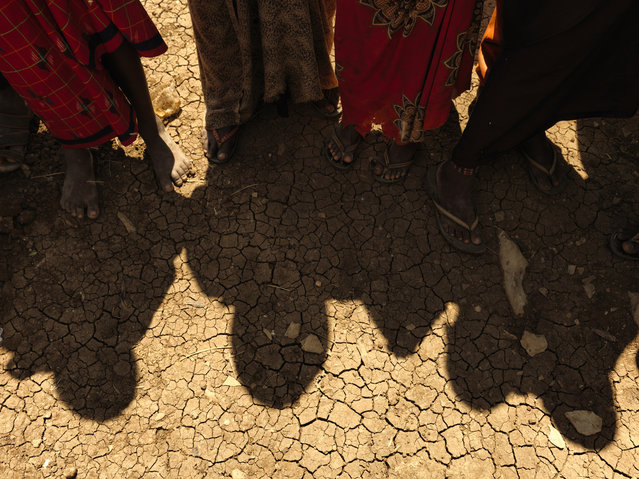
The worst drought in 40 years has a cruel grip on Somalia. A struggling young government and militant violence have compounded to bring crisis to 6.7 million lives. The town of Baidoa is facing some of the harshest conditions. Surrounded by territory controlled by al-Shabaab militants and amid ongoing attacks, 160,000 people have had to leave their farms and are surviving in camps where hunger, thirst and cholera await them. The numbers are huge – one in six people in Somalia displaced as a result of conflict, drought and the resultant food crisis. Humanitarian assistance in the country is needed by 6.7 million. Somalia is one of four countries currently in the grip of hunger along with Yemen, South Sudan and Nigeria. (Photo by Peter Caton/Mercy Corps)

Two seasons of failed rains and insecurity have pushed 155,000 people from rural areas into Baidoa, the provincial capital of the Bay region, in the country’s south west. Many have set up home at Muuri camp, gathering together in the hope food and water will reach them. (Photo by Peter Caton/Mercy Corps)
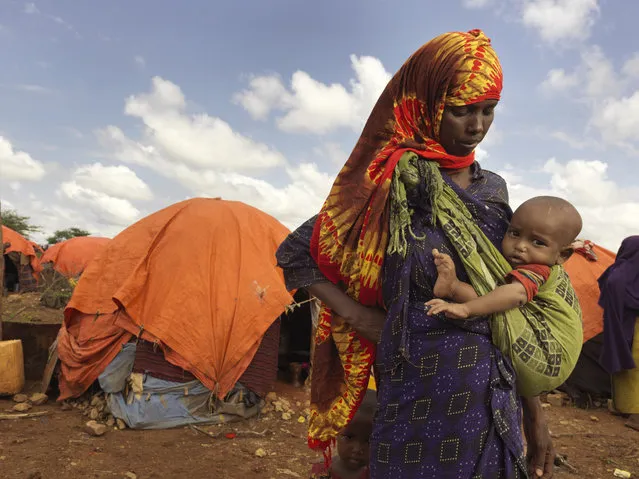
Many Somalis in Baidoa say this drought is worse than the one in 2011, when famine was declared in parts of the country and more than 250,000 people died. A far lower death toll this time shows Somalia has been making progress against the odds – and the changing climate. “I have two children and I live with my husband, we have been here in this camp for three months. We had to come here when our savings finished and our goats died. My family have always been farmers”, says Kaltun Aliyow Mumin, 28, at Dusta camp in Baidoa. (Photo by Peter Caton/Mercy Corps)
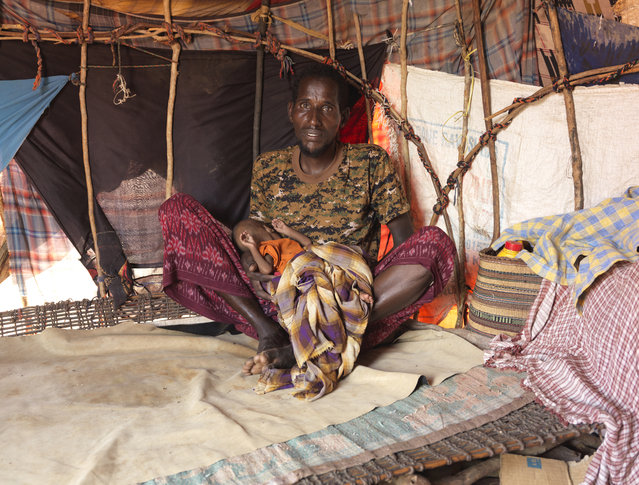
Reports say that the Islamist group al-Shabaab has banned aid from reaching the regions it controls. Violence is compounding the humanitarian situation. Al-Shabaab control much of the countryside and have told Somalis they will be punished for contacting humanitarian organisations. Isaak Hassan’s seven-month-old daughter, Nadifo, is malnourished. They now live at Dusta camp. (Photo by Peter Caton/Mercy Corps)
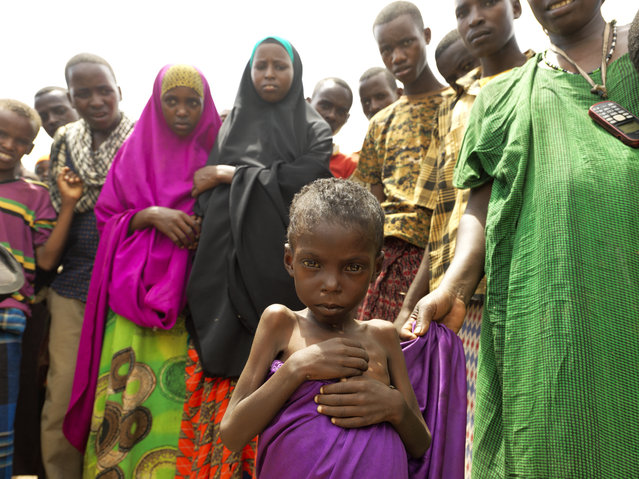
About 3.2 million people are on the brink of starvation in Somalia. Thirteen-year-old Abshivay Hussein Maalin is suffering from malnutrition. He is living in Muuri IDP camp in Baidoa. (Photo by Peter Caton/Mercy Corps)

Food packages are reaching those who can escape militia-controlled areas. The NGO Mercy Corps is feeding vulnerable families in Baidoa. (Photo by Peter Caton/Mercy Corps)
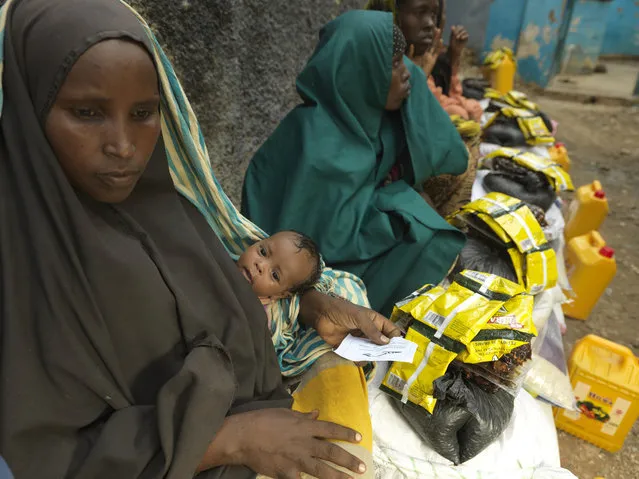
The packages include the plainest of sustenance - rice, flour, oil, beans, sugar, tea and dates. People are never quite sure when the next one might come and eke out what they have. (Photo by Peter Caton/Mercy Corps)
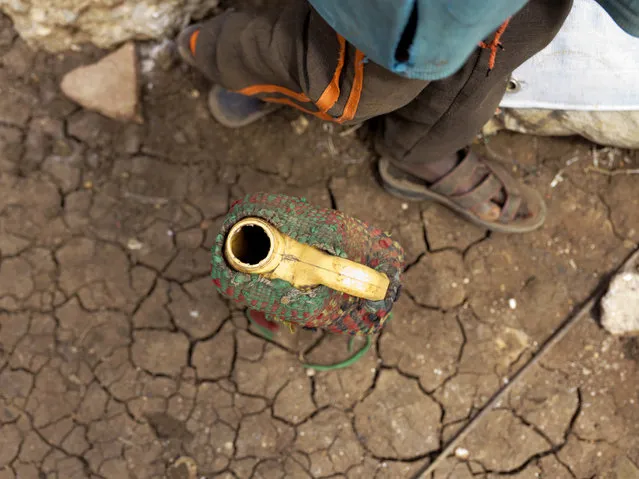
The drought means severe water shortages, tripling the price of a barrel of water (about 200 litres) to $15, prices beyond the reach of ordinary people in Somalia. (Photo by Peter Caton/Mercy Corps)
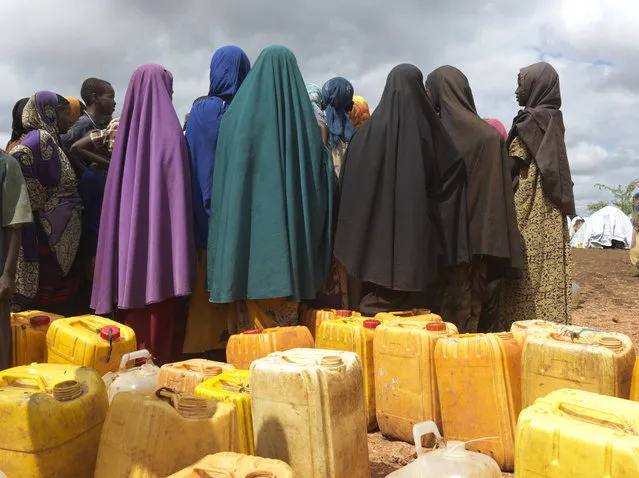
The rising cost of water pushes people to use open bodies of water. Mercy Corps is currently pumping 10,000 litres of clean water into the camp. (Photo by Peter Caton/Mercy Corps)
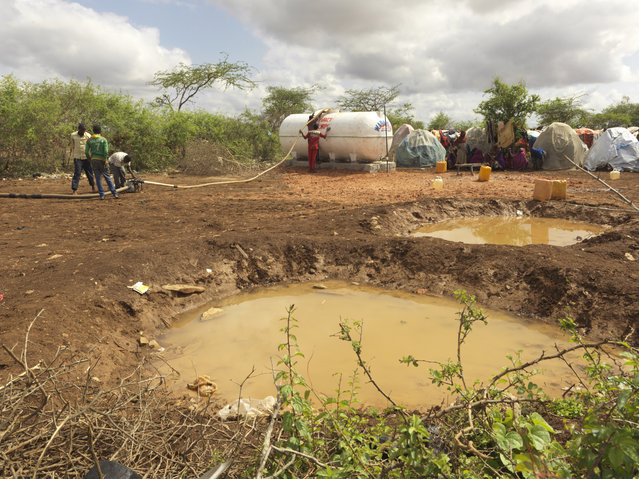
Dirty and contaminated pools of water bring disease and harbour infections. (Photo by Peter Caton/Mercy Corps)
[img alt="Hadija Mohamed Issack, 22, is disabled and struggles to find enough to eat at Muuri camp. “We have no hope back at home”, she says. About 70% of Somalis depend on agriculture as a livelihood and have watched their farmlands dry up and their animals die in the past three years of drought. “In the village we initially lived from our animals, but they died from the drought. The hunger brought us here. My husband suffers from mental [health] problems and we had to leave him in the village”. (Photo by Peter Caton/Mercy Corps)"]294891[/img]
Hadija Mohamed Issack, 22, is disabled and struggles to find enough to eat at Muuri camp. “We have no hope back at home”, she says. About 70% of Somalis depend on agriculture as a livelihood and have watched their farmlands dry up and their animals die in the past three years of drought. “In the village we initially lived from our animals, but they died from the drought. The hunger brought us here. My husband suffers from mental [health] problems and we had to leave him in the village”. (Photo by Peter Caton/Mercy Corps)
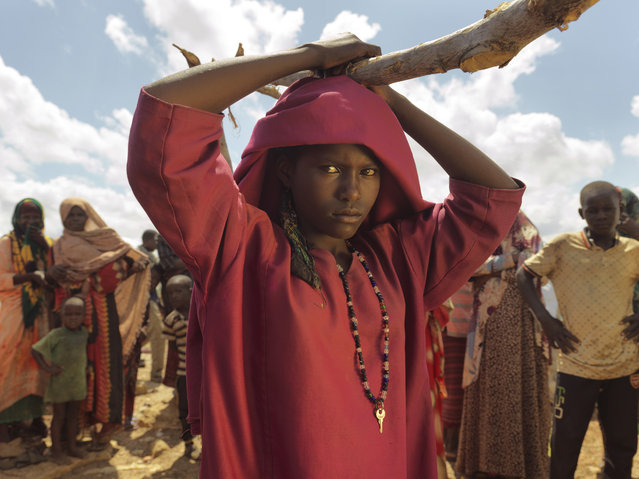
Fadumo Nunow Abdillow, 15, lives at Muuri camp. The UN has appealed for $1.5bn to address the crisis. Just 40% of the money ($611.m) has been received so far. (Photo by Peter Caton/Mercy Corps)
12 Aug 2017 05:47:00,
post received
0 comments
